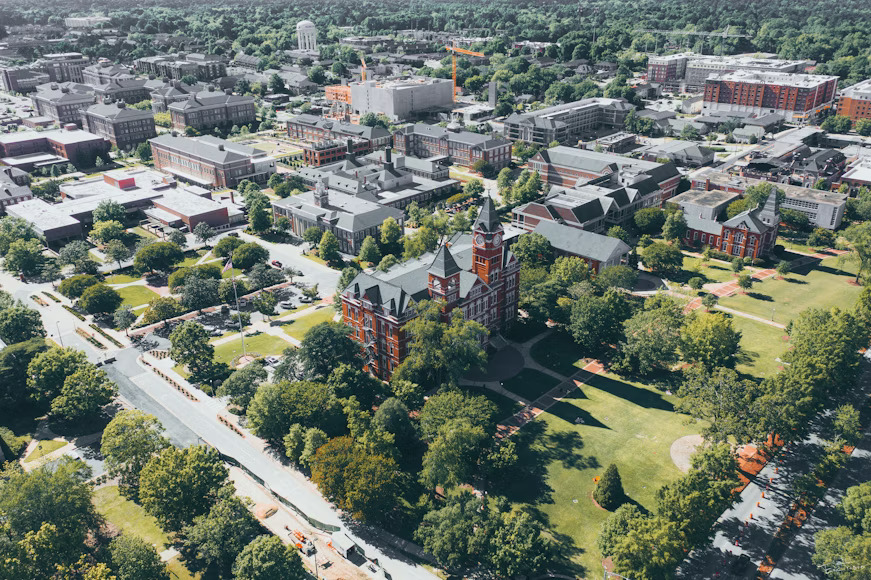The COVID-19 pandemic, and resulting stay-at-home culture, have brought significant and broad impacts to residential markets in Alabama. Total residential sales are up from the prior year, while new home sales hit an all-time high in June 2020. Homes are also selling faster than this time last year, while home sales prices are rising faster than they were pre-pandemic. And on the supply side, total residential listings continue to trend downwards, which has played a significant role in properties selling faster and at higher prices.
Not surprisingly, the initial impact of the pandemic was mainly on total residential sales, which declined 8.9% and 15% year-over-year in April and May. This was largely a result of shelter-in-place orders during those months and declining overall economic activity during the second quarter of the year. When these restrictions were lifted, however, a significant rebound effect was seen in total statewide sales during June and July, which increased 18.7% and 22.3% respectively. After a modest gain of 9% in August, sales were up significantly again in September, rising 21.9%. Year-to-date, sales are up 8.6% from 2019, which was a record year for residential sales activity in the state. If the upward trajectory of sales activity seen from June to September continues into the fourth quarter, it is likely that 2020 will be another record year for home sales in Alabama. While the economic impact of the pandemic is vast, the housing sector has been somewhat resilient in an overall down economy.
Historically low mortgage rates have also played a critical role in rising home sales activity. Buyers are incentivized by the ability to borrow money long-term for around 3%, providing more purchasing power. Low mortgage rates also help to offset rising home sales prices. The statewide median sales price averaged 11.9% growth year-over-year from April to September 2020, while it averaged 5.8% over the same stretch in 2019. Much of this price growth is driven by extremely low inventory levels.
One of the more significant effects of the pandemic has been reduced inventory. Residential markets entered the pandemic with tight inventory, and it has tightened further with a 33% year-over-year decline in September, the largest such decline in ACRE’s database. For context, inventory was down an average of 14.6% during the first quarter of 2020, down 10.8% in 2019, and down 9.4% in 2018. This shortage of homes listed for sale has played a significant role in rising home prices as buyers compete with one another for a limited amount of properties listed for sale.
Tight inventory also helps explain why homes are selling faster now than they were one year ago. The fastest selling markets in the state, generally speaking, are large metros like Birmingham and Huntsville. From April to September 2020, versus the same period in 2019, the average days on market for the Birmingham area dropped from 37 to 29. For Huntsville it improved from 42 to 24. While Birmingham and Huntsville represent the two fastest selling markets in the state, all other metro areas (with the exception of Tuscaloosa) have seen properties selling faster in 2020 when compared to 2019. Non-metro areas, on the other hand, are seeing different results as four of the nine areas (Jackson County, Marshall County, Talladega County, and the Wiregrass Region) have a lower DOM average year-to-date in 2020, while the remaining 5 have experienced a longer sales cycles during the pandemic months.
New home sales have also seen significant gains in the pandemic months, hitting an all-time high in June 2020 with 1,070 closed transactions. New homes appeal to today’s consumer for a variety of reasons. They are likely to have a home office, especially as a growing number of Americans work remotely. Many new homes are clustered in suburban communities that offer space, privacy, and quality schools. Although the suburbs are nothing new, the pandemic has resulted in a demographic shift back to the suburbs. Additionally, a growing number of consumers are making home purchase decisions on photos alone, with many buyers feeling more comfortable about that decision when it is a new home versus an existing one.
Will these trends continue into the later fall months? ACRE’s next statewide report will be available Friday, November 19, 2020, providing additional insight into Alabama’s housing markets during these unique times.






